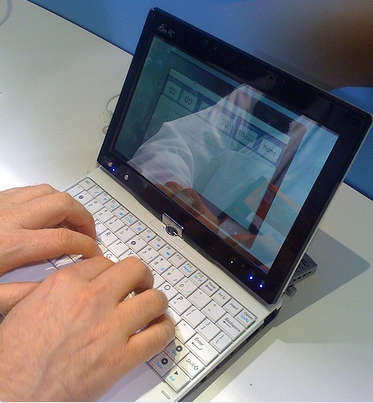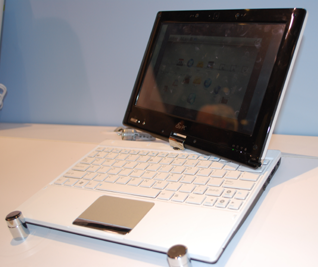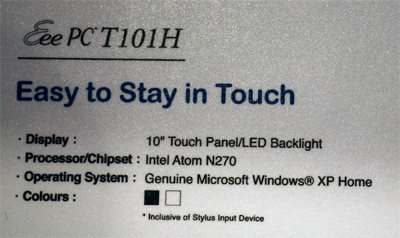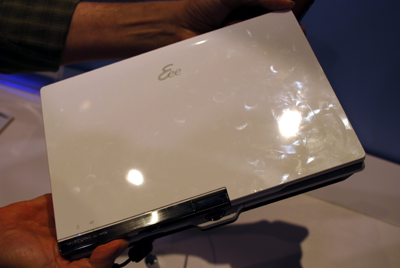While most companies are CES are cutting back at the show, one isn’t. ASUS. And it’s because of a little PC that’s making all the difference–well, because of one big little product line, the Eee PC product portfolio.
In years past, ASUS was always one of the “little” vendors at CES. Even though it’s been a big player in the PC market for years, it never had that big of a booth, often opting for a little office style area nestled in the back of the 2nd floor of the south hall. You know, way, way, way in the back.
Not this year. This year, in large part I think because of the success of the Eee PC line, ASUS is going all out will a full-sized booth with a full-sized range of products.
No longer is the Eee PC moniker saved for its smallest PC. Some have scoffed at this, but I see it as a reflection of the fact that more and more people are wanting mobile PCs in large part because Intel (in large part) finally has a good enough small processor, the Atom.
And as ASUS extends its Eee PC line, this year at CES it shows off two Tablets and a touch display.
First, there’s the 8.9″ Eee PC T91. Think of this as a hinged version of the standard Eee PC with a resistive digitizer.
Second, there’s the just announced 10.1″ T101H Eee PC. We (Lora, Layne and I) had a good chance to play with the T101H and from what I saw it looks quite promising as an offering in the Eee line.
Like a lot of the other Netbooks shipping today, the T101H has an N270 Atom processor and runs Windows XP Home:
Here are a few more shots of the Eee PC T101H:
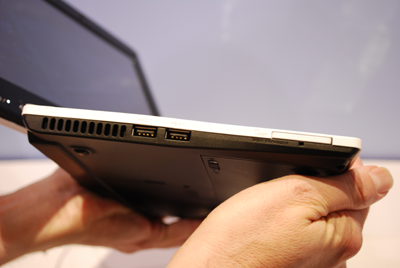
Left side has vent, 2 USB, SSD
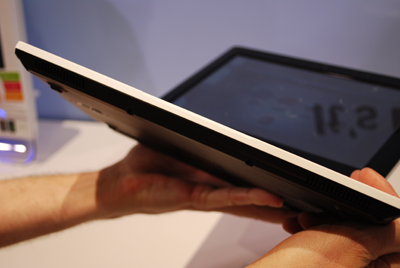
Front edge doesn’t have any connectors
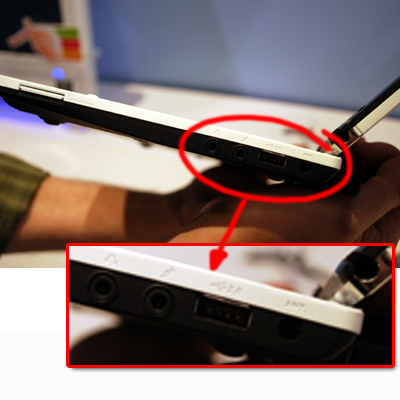
Right side has MMC/SD/SDHC, headset, mic, USB, antenna
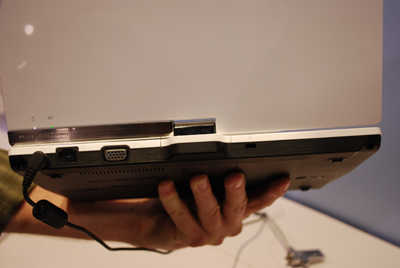
Back side has power connector, NIC, VGA connector
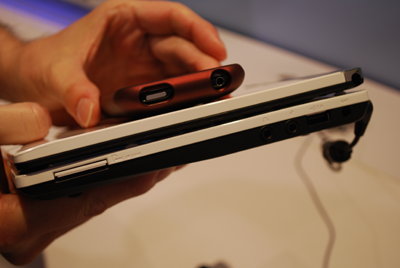
Comparing the thickness of the T101H and a 3G iPhone
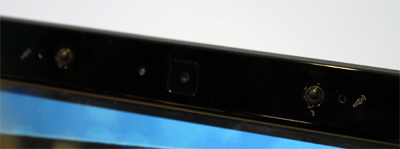
Top of display bezel has a webcam surrounded by an array mic (2 mics)
What’s interesting here is that the Tablet PC version of XP is not being used. This means with XP Home there are no Tablet bits. There’s no stock Microsoft handwriting recognition. No TIP (Tablet Input Panel).
There is some hope though. For schools or others with Windows volume licensing, it is possible and practical for them to wipe out the installed OS and put a copy of Windows XP Tablet PC Edition on it.
An alternative is to install Windows 7 beta that has some form of Tablet bits. With the current 7 beta and the impending release of the gold version this is probably not a bad approach–but that’s just me. A key reason is that Windows 7 beta seems to run pretty well on these diminutive devices.
So here are some things I noticed about the T101H:
* The size is right for a very small notebook-style Netbook. A 10″ wide display is about as small as I personally like going. With smaller displays the resulting keyboard is just too small. That’s my personal take anyway. With a 10″ display like on the T101H, the keyboard is reasonably large.
* The resistive digitizer is adequate for a low-cost device, but I’d sure like to see something more robust as a multi-touch and writing surface.
* The weight, casing, finish are all nice.
* There’s a VGA connector in the back. That’s nice for people that need to hook into a bigger monitor like at schools or for presentations. I wonder if USB or some time of new, smaller, more compact connector isn’t going to eventually win here. Of course, the current style of connectors is inexpensive and that’s good for the Eee line.
* The keys have quite a bit of spacing between them and are raised which gives the T101H a unique look, but I’m not so sure if this is the best for rapid typing. I guess you can get used to anything though.
* The trackpad is nice and large and quite comfortable to use–especially compared to something like the trackpad on the HP Mini 1000s.

